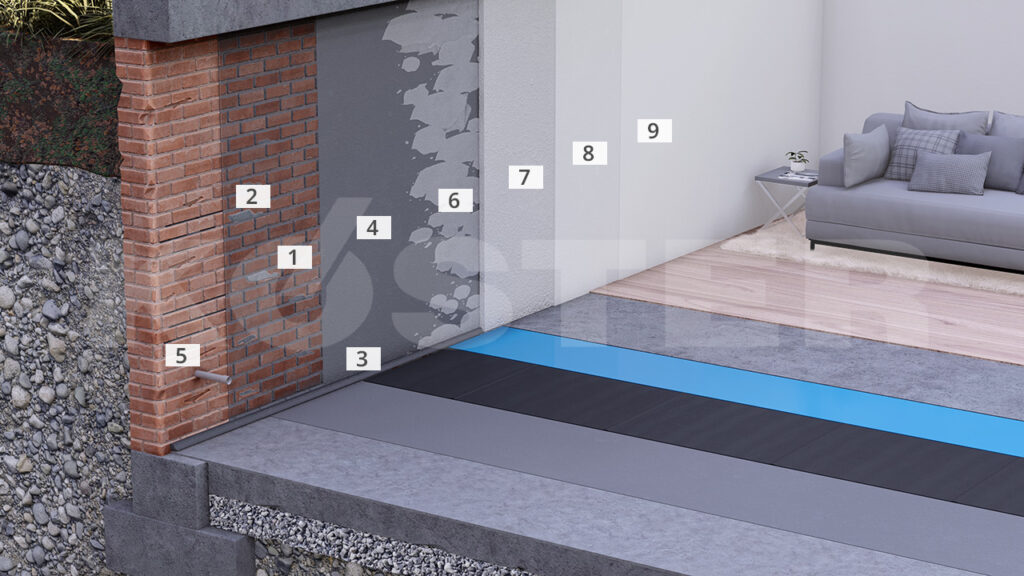
Retroactive waterproofing in existing buildings needs to be done with mineral waterproofing systems. They have excellent bonding characteristics to mineral surfaces and won’t detach from wet and moist substrates.
The material is applied to substrates that have to be sound and solid as well as free from bond inhibiting agents. Older plaster coats have to be removed; the joints raked out and all loose particles removed. As primer, KÖSTER Polysil TG 500 is used. It hardens the substrate as well as reduces the mobility of salts. Masonry repair and the installation of a fillet at the wall-floor junction is done with KÖSTER Repair Mortar Plus.
KÖSTER NB 1 Grey is used as the waterproofing layer. To get a lighter surface finish, use KÖSTER NB 2 White for the final coating.
Pipe penetrations are waterproofed using KÖSTER KB-Flex 200 and sealed with KÖSTER KB-Fix 5.
In the case of damage to basement walls caused by moisture, generally a KÖSTER Restoration Plaster should be applied. KÖSTER Restoration Plasters are specially designed for the restoration of masonry with high salt and moisture contents. KÖSTER Restoration Plasters help to dry out the wall and absorb remaining salts. They don’t contain lime or gypsum, are open to water vapor diffusion and create a healthy and comfortable room climate.
Before the application of the main plaster coat, a plaster key made from KÖSTER Restoration Plaster Key or the chosen KÖSTER Restoration Plaster mixed with KÖSTER SB-Bonding Emulsion is applied to provide a larger surface area and ensure an optimal bond to the substrate. KÖSTER Restoration Plasters are available in different varieties (grey, white, fast and light). KÖSTER Restoration Plaster White is often used in older buildings without subsequent painting. KÖSTER Fine Plaster creates a very smooth surface and can be applied when desired to meet architectural goals. KÖSTER Restoration Plasters can only be painted over with breathable (open to vapor diffusion) paints such as KÖSTER Silicone Paint White or KÖSTER MF1.
Always adhere to the specifications in the respective Technical Guidelines.

Leave a comment